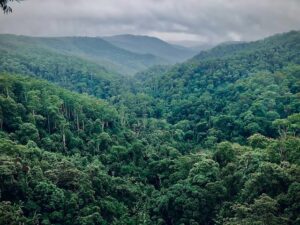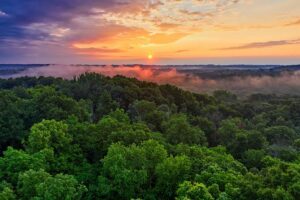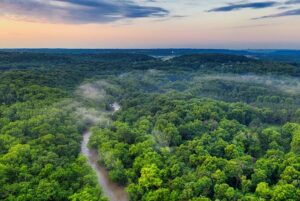Introduction
The Amazon Rainforest, often referred to simply as the Amazon, is a vast and ecologically significant region that spans across several South American countries, with Brazil being the largest contributor to its expanse. This natural wonder, characterized by its breathtaking biodiversity and immense size, holds a prominent place in our planet’s ecological and historical narratives.
Area
The Amazon Rainforest is the largest tropical rainforest on Earth, covering an astonishing area of approximately 5.5 million square kilometers (2.1 million square miles). To put this immense size into perspective, it is roughly equivalent to the landmass of the contiguous United States. This sprawling forest is so vast that it extends into nine South American countries, with the majority (about 60%) residing within Brazil’s borders. The other countries that share portions of the Amazon include Peru, Colombia, Venezuela, Ecuador, Bolivia, Guyana, Suriname, and French Guiana.
History
The history of the Amazon Rainforest is as ancient as it is diverse. It is estimated that this rainforest has been home to indigenous peoples for more than 10,000 years. These indigenous communities, with their deep understanding of the forest’s resources and ecosystems, have lived in harmony with the Amazon for generations.

The European encounter with the Amazon began in the late 15th century when Spanish and Portuguese explorers ventured into the region. However, it wasn’t until the 17th and 18th centuries that more extensive exploration and exploitation of the Amazon began. Rubber extraction, in particular, led to a boom in the late 19th and early 20th centuries, drawing people from all over the world to the Amazon basin.
Modern history has seen the Amazon facing a myriad of challenges. Deforestation for agriculture, logging, and mining has posed a significant threat to its delicate ecosystems. Conservation efforts have been initiated to protect this vital natural resource, including the establishment of numerous national parks and reserves.
Significance
Biodiversity:
It is one of the most biodiverse places on Earth, hosting millions of species, many of which are found nowhere else.
Carbon Storage:
The Amazon acts as a vital carbon sink, absorbing and storing vast amounts of carbon dioxide, helping mitigate climate change.
Climate Regulation:
It plays a crucial role in regulating global climate patterns and rainfall, influencing weather systems around the world.
Oxygen Production:
The Amazon produces about 20% of the world’s oxygen, essential for human and animal life.
Indigenous Communities:
Home to numerous indigenous groups, it is central to their cultures, traditions, and livelihoods.

Medicinal Resources:
The rainforest contains a wealth of potential medicinal plants and compounds that could benefit human health.
Global Ecosystem:
Changes in the Amazon can disrupt ecosystems worldwide, affecting weather, agriculture, and biodiversity.
Protecting the Amazon is crucial for the health of our planet and the well-being of its inhabitants.
Country of the Amazon Forest
While the Amazon Rainforest stretches across nine countries, Brazil is the nation most closely associated with its vast expanse. Approximately 60% of the Amazon resides within Brazil’s borders. This massive portion of the forest is spread out across several Brazilian states, including Amazonas, Acre, Roraima, Rondônia, and others. Brazil’s role in the Amazon’s future is pivotal, as the country grapples with the balance between economic development and environmental conservation.
Each of the other countries that shares the Amazon contributes to the overall ecological significance of the region. Peru, for example, holds a substantial portion of the rainforest and is known for its incredible biodiversity. Colombia and Venezuela also host vital sections of the Amazon, playing essential roles in maintaining the forest’s health.
Rainfall
The Amazon rainforest typically experiences high levels of rainfall throughout the year. On average, it receives about 9 feet (2.7 meters) of rainfall annually. This abundant rainfall is essential for the diverse ecosystems and plant life that thrive in the region, making the Amazon one of the most biodiverse places on Earth. However, it’s important to note that rainfall patterns can vary within the Amazon basin, with some areas receiving more rain than others.

What is the Space Station? Significance, History And Future
Conclusion
the Amazon Rainforest is an unparalleled natural treasure known for its vast area, rich history, and distribution across several South American countries. It serves as a symbol of the Earth’s remarkable biodiversity and the need for international cooperation to protect and preserve this unique ecosystem. The future of the Amazon rests not only in the hands of the countries it spans but also in the global community’s commitment to sustainable conservation efforts.




















[…] Amazon forest: Area, History and Significance […]